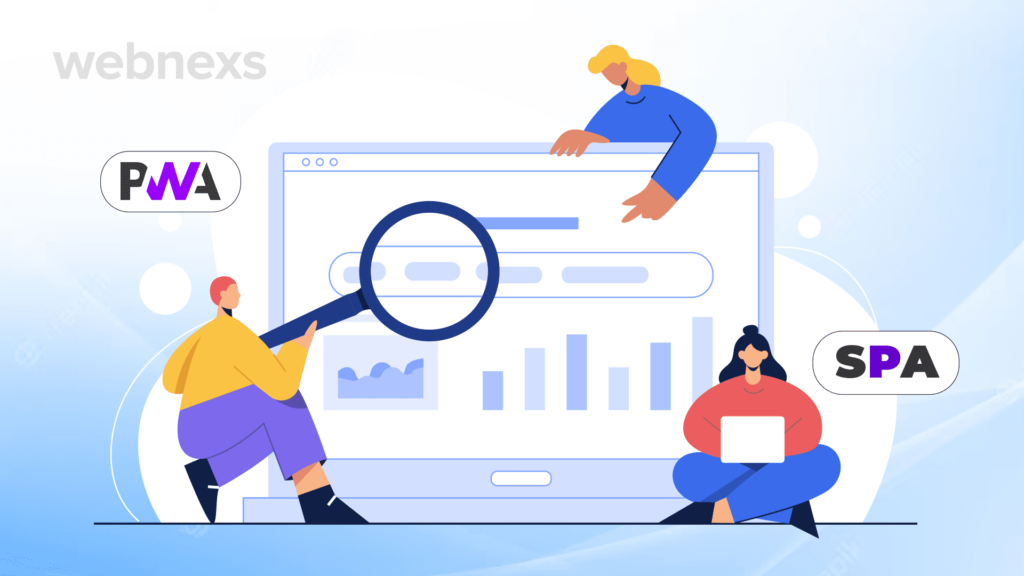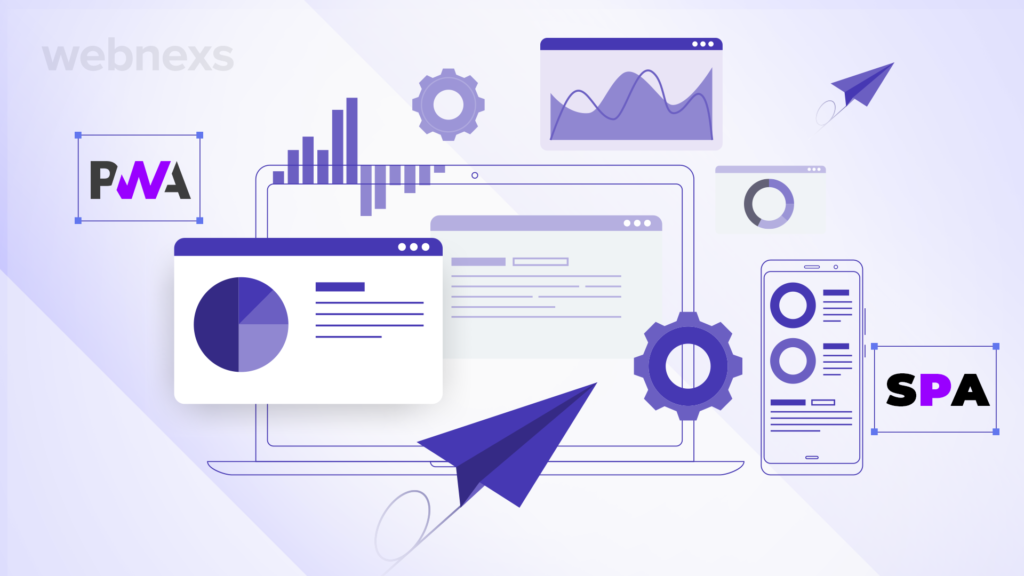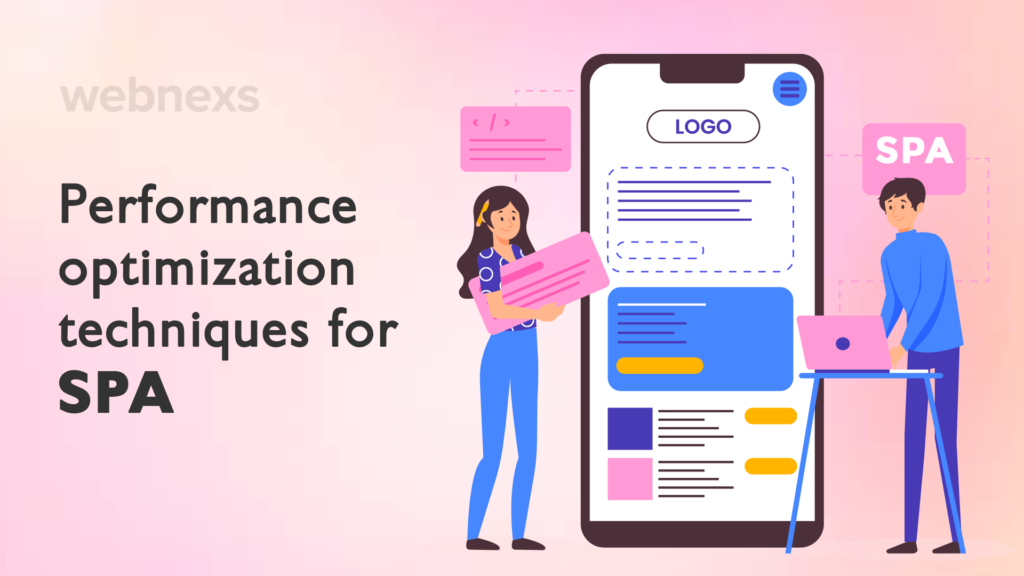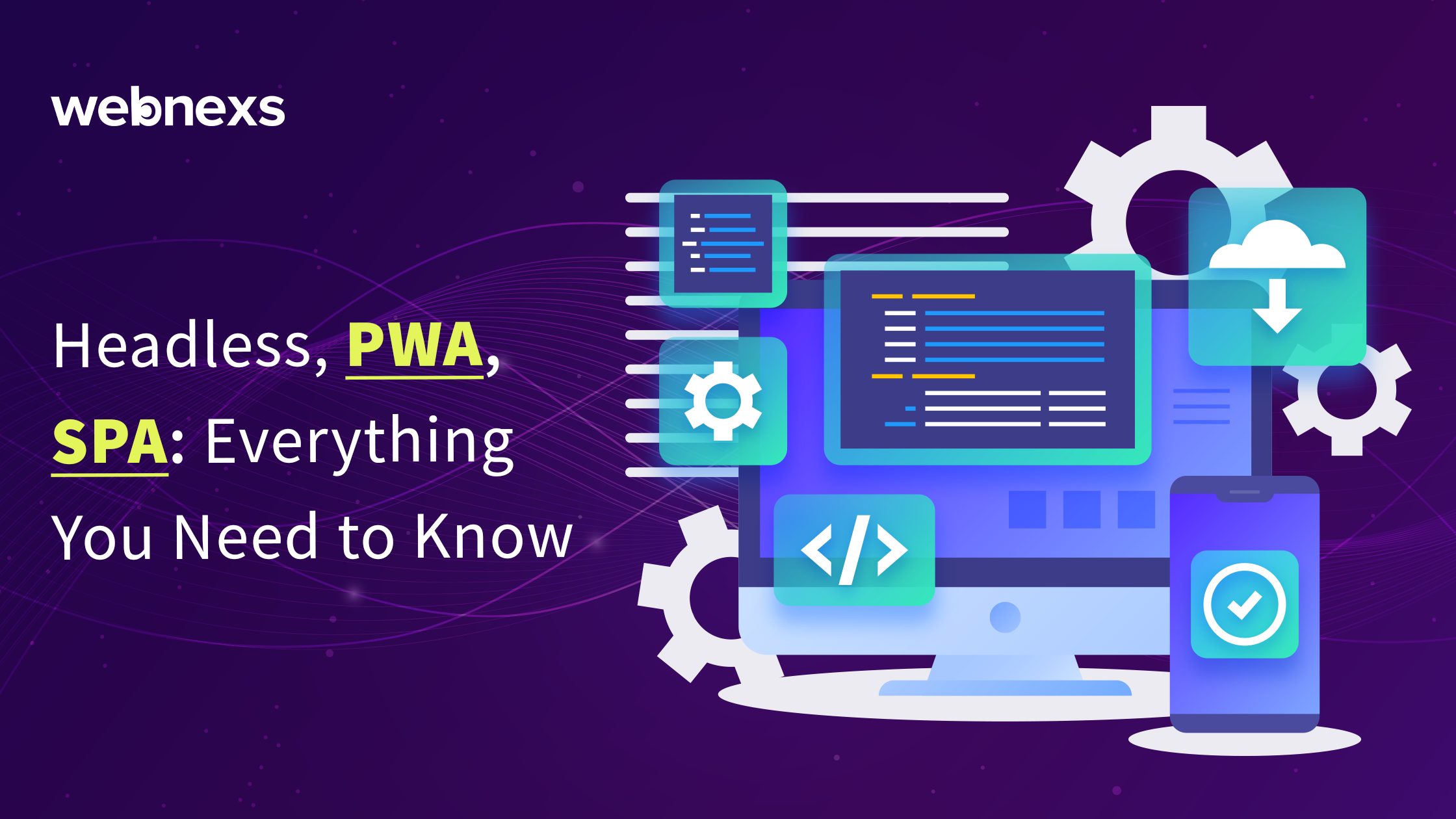Introducing a game-changing approach to ecommerce: Headless SPA and PWA technology. Dive into our comprehensive guide to unlock the secrets behind these cutting-edge solutions. Discover how Headless PWA can revolutionize your online store, offering unparalleled flexibility, speed, and user experience. Get ready to elevate your ecommerce game with our in-depth exploration of SPA, PWA, and headless commerce.
Imagine a world where online shopping is seamless, fast, and engaging. Where customers can effortlessly browse and make purchases with lightning speed, even on slow internet connections. This is the promise of Headless PWA, SPA, a revolutionary approach to building ecommerce websites. In this article, we will explore you about SPA, PWA Headless Commerce combinations, and it’s performance optimization techniques.
What Is SPAs (Single-Page Applications)
SPAs a web application that loads a single HTML page and updates the content dynamically as users interact with the application.
Unlike traditional websites, which require a full page reload for each interaction, SPAs provide a smoother, more seamless user experience by fetching data in the background and updating the page dynamically.
This eliminates the jarring experience of page refreshes and enables faster, more responsive applications.
What Is Headless PWAs (Progressive Web Apps)
They are built using web technologies but offer an app-like experience to users. Headless PWAs can be installed on a user’s home screen, work offline, and provide push notifications, making them highly engaging and convenient.
By leveraging service workers and caching, PWAs deliver lightning-fast performance, even in low or no network connectivity scenarios.
Unlocking the Potential of Headless Commerce
With Headless Commerce, businesses have the freedom to design and build their front-end experiences using any technology stack or platform, while leveraging the robustness and scalability of a commerce platform in the back end. This decoupling allows for greater flexibility, faster time-to-market, and a seamless omnichannel shopping experience.
Visit Here: What is Headless Commerce: Definition and Key Features Explained
Headless PWA, SPA: The Perfect Combination

Now let’s understand how SPA, PWA Headless Commerce synergize to deliver exceptional user experiences and business growth.
1. Enhanced Performance and Speed
SPA architecture eliminates the need for full page reloads, resulting in lightning-fast page load times and seamless interactions. Combined with PWA capabilities like caching and service workers, SPA, PWA Headless Commerce ensures that your customers experience optimal performance, regardless of their network conditions.
2. Improved User Experience
SPA, PWA Headless Commerce offers a highly interactive and engaging user interface. With smooth transitions, instant feedback, and navigation, users are more likely stay on website, explore products, and complete their purchases. PWAs further enhance the experience by providing native-like app features, such as offline access and push notifications.
3. Cross-Platform Compatibility
SPA, PWA Headless Commerce applications are designed to work seamlessly across different devices and platforms. Whether
4. API-Based Integration
API-based integration plays a crucial role in SPA, PWA Headless Commerce. APIs enable communication between different systems and allow the front-end and back-end to exchange data seamlessly. In a headless architecture, APIs facilitate the interaction between the front-end application and the commerce platform, enabling real-time updates, retrieving product information, and processing transactions.
5. CMS Integration
In SPA, PWA Headless Commerce, integrating a CMS becomes crucial for managing and delivering content to the front-end application. A CMS enables businesses to create, edit, and organize content, including product descriptions, images, and promotional banners. The headless approach allows for the flexibility of using different CMS platforms and tools while ensuring a consistent user experience.
Read More: Headless Ecommerce CMS Development
6. Service Workers and Caching
Service workers and caching are integral to the PWA aspect of SPA, PWA Headless Commerce. Caching allows PWAs to store and retrieve data, assets, and HTML templates, reducing reliance on network requests and significantly improving performance, especially in low or unstable network conditions.
7. Mobile Responsiveness and Cross-Platform Compatibility
SPA, PWA Headless Commerce aims to provide a seamless experience across different devices and platforms. The responsive design ensures that
8. SEO Considerations for SPA, PWA, and Headless Commerce
When it comes to implementing SPA, PWA, and headless commerce, it’s essential to consider the impact on SEO. These innovative technologies offer numerous benefits for user experience and performance, but they also present unique challenges for ensuring search engine visibility.
Difference Between SPA And PWA
SPA and PWA both offer improved user stories, but they vary in key factors. SPAs load content material dynamically on a single web page, while PWAs integrate web and local app capabilities for offline get entry to and push notifications. Understanding those differences is crucial for leveraging headless commerce successfully.
Best Practices For Optimizing SPA And PWA In Webnexs

Creating and optimizing SPA and PWA in Webnexs requires careful consideration of various factors to ensure excellent performance and user experience. Here are some best practices to follow when working with Webnexs SPA and PWA.
Performance Optimization Techniques For SPA

- Reduce the size of JavaScript bundles: To improve page load times and reduce network requests, minimize the size of JavaScript files by removing unused code and optimizing the code for faster execution.
- Implement lazy loading: Load resources only when they are needed to reduce initial load times and improve page speed.
- Use a content delivery network (CDN): Leverage a CDN to serve static assets, such as images and fonts, from a server that is closer to the user, reducing latency and improving performance.
- Use server-side rendering (SSR): Implement SSR to improve the initial page load times by rendering the HTML on the server and sending it to the client, reducing the amount of JavaScript that needs to be executed on the client-side.
- Optimize image sizes: Compress images to reduce their size and improve load times, while still maintaining visual quality.
Performance Optimization Techniques For Headless PWA
- Implement caching: Use a service worker to cache critical assets, such as CSS, JavaScript, and HTML, to enable offline functionality and reduce network requests.
- Minimize the use of third-party scripts: Limit the use of third-party scripts that may slow down the application and reduce performance.
- Optimize the critical rendering path: Ensure that the most important content is loaded and rendered quickly to improve perceived performance.
- Use the WebP image format: Use the WebP image format to reduce image size and improve load times without sacrificing visual quality.
- Use the app shell model: Implement the app shell model, where the basic layout and navigation elements are cached, to enable instant loading of the application shell and improve the perceived performance.
Optimizing SPA and PWA in Webnexs requires a combination of server-side and client-side optimizations, along with efficient use of caching and network resources. By following these best practices, you can deliver highly performant and engaging user experiences that drive business growth and success.
Headless PWA FAQs
1. What is a headless PWA?
A headless PWA combines the benefits of a PWA with a headless commerce architecture, enabling seamless integration with various backend systems and providing a superior user experience across devices.
2. What is headless e commerce platform?
A headless ecommerce platform decouples the frontend from the backend commerce functionality, offering flexibility and scalability for building customized online shopping experiences.
3. What is a headless framework?
A headless framework refers to a development approach where the frontend and backend of an application are separated, allowing for independent development and deployment of each component.
4. What is PWA in commerce?
PWA in commerce refers to Progressive Web Applications implemented in ecommerce settings, offering fast, engaging, and reliable shopping experiences across devices, even in offline mode.
5. What is the difference between PWA and headless commerce?
The main difference between PWA and headless commerce lies in their focus: PWA emphasizes frontend user experience enhancements, while headless commerce prioritizes backend flexibility and interoperability with various frontend frameworks and channels.

Leave a Reply